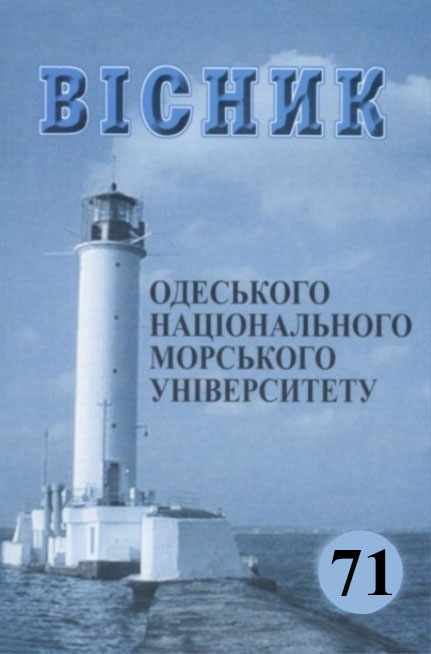Development of practical application of self-propagating thermodynamic synthesis in the restoration of worn mechanisms
Main Article Content
Abstract
The stady analyses the technologiical possibilities of generating metal using various methods. Publications of specialized monographs and dissertations in the field of welding, surfacing, foundry production are reviewed, focusing on the application of thermodynamic synthesis, which extends to the use of the exothermic high-temperature synthesis process (HTS) in alloy formation processes. The processes involved can make a significant contribution to solving problems related to energy and resource conservation. First of all, information about research in the field of exothermic surfacing up to the present time is necessary to outline prospects for further research and development. Exothermic surfacing has advantages over other methods, primarily the absence of a source of electrical energy and the use of cheap primary aluminum powder and metallurgical waste ‒ iron scale as components of thermite mixture, as well as a high rate of exothermic reaction ‒ up to two tons of metal can be welded in just 20 seconds. However, lengthy preparatory work and difficulties in controlling the surfacing process significantly limit the application of exothermic surfacing. But in conditions when there is no power supply and technological equipment, and it is necessary to restore the defect formed for the further performance of a particular mechanism, the process of thermite metal formation by the exothermic reaction method is extremely promising. In order to obtain a desired high-quality product, it is necessary to have a deep understanding of the process of self-propagating high-temperature synthesis (HTS) and be able to manage it. To achieve this, one must have knowledge of the theory of HTS processes; understand the mechanisms of their occurrence and the influence of various parameters. It is necessary to be able to select optimal technological modes, use methods of regulating speed, temperature, and completeness of combustion, as well as understand the composition and structure of combustion products. It is necessary to know and correctly select equipment for implementing the HTS process. We must know the types and peculiarities of materials obtained by the HTS method, be able to determine their properties correctly, and certify the final HTS products. Finally, we must accurately assess the technical and economic efficiency of a specific technology in order to make the right decision to create a production based on this technology that would be profitable under market conditions.
Article Details
References
2. Амосов А.П., Боровинская И.П., Мержанов А.Г. Порошковая технология самораспространяющегося высокотемпературного синтеза материалов. М.: Машиностроение-1, 2007. 568 с. [Amosov A.P., Borovinskaya I.P., Merzhanov A.G. Powder tehcnology of the self-propagating high-temperature synthesis of materials. Moscow: Mashinostroenie-1, 2007. 568].
3. Яценко В.В., Амосов А.П., Самборук А.Р. Термодинамические иследования горения железоалюминиевого термита // Вестник Самарского государственного технического университета. Серия «Физико-математические науки». 2011. Выпуск 2(23). С. 123-128.
4. Кувшинова Н.Н. Технология устранения дефектов стального литья экзотермической наплавкой: Автореф. дисертации канд. техн. наук. Тольятти: ТолГУ, 2004. 17. [Kuvshinova N.N. Defect removal technology for exothermic welding of steel castings: Ph. D. (Techn.) Thesis. Togliatti: TolGU, 2004. 17]
5. Медовар Б.И. Электрошлаковая технология на пороге XXI века // Сов- ременное материаловедение XXI век. ‒ Киев: Наук, думка, 1999, 656 с.
6. Костюк М.Д., Козак В.В. та ін. (2010), Будівництво та реконструкція залізничної мережі України для збільшення пропускної спроможності та запровадження швидкісного руху поїздів. К.: ІЕЗ ім. Є.О. Патона, 216 с.
7. Лебедев Б.В. Анализ возможности и целесообразности использования экзотермических смесей для разработки новых перспективных технологий восстановления спряжений деталей СТС // Матеріали Міжнародної науково-методичної конференції «Сучасні проблеми суднової енергетики 2005». ‒ Одеса: ОНМА. 2005, С. 53-54.
8. Мухачев А.П., Харитонова Е.А. Физико-химические основы СВС-процесса получения сплавов на основе редкоземельных металлов. Металлофизические новейшие технологии. / Metallofiz. Noveishie Tekhnol. 2017. Т. 39. № 10, С. 1395-1409.
9. Лебедев Б.В., Богомолов Э.П. Аналитическое определение количества теплоты, необходимого для сварки стальных конструкций на воздухе экзотермическими стержнями // Проблемы техники. – 2017, С. 21-29.
10. Богомолов Е.П.. Підвищення ефективності ремонту та зміцнення дизельної газовипускної системи, застосувавши високо розповсюджуваний високотемпературний синтез отримання сплавів. ІV Міжнародна науково-практична морська конференція кафедри суднових енергетичних установок та технічної експлуатації (СЕУ та ТЕ) Одеського національного морського університету (MPP&O-2022), С. 94-102.
